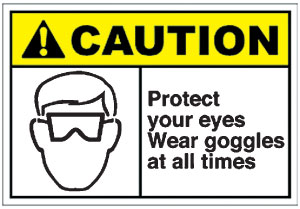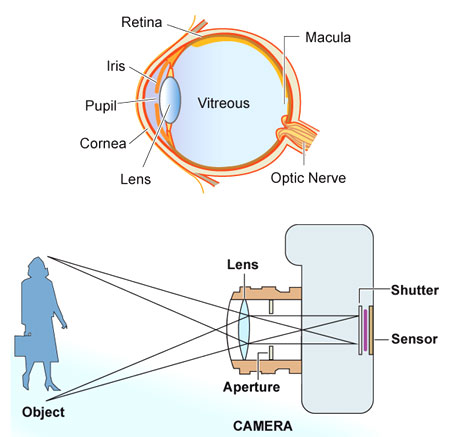
Injuries to the eye are very common during festive seasons. Statistics from the Eye Hospital have showed that the highest number of patients with eye injuries occur during the Tamil and Hindu New Year.

Although the number of eye injuries has plunged due to awareness raising by the Health Ministry, still the danger of accidents from fireworks as well as domestic accidents exist at this time and even when the festive season is over cannot be ignored, especially, because more domestic activities in homes, like, cooking and cleaning as well as Avurudu games that continue.
Consultant Community Ophthalmologist, Ministry of Health, Dr Asela Abeydeera gives more insights into the nature of eye injuries and how they can be prevented and treated at home and outside, in this interview with the Sunday Observer. Following are excerpts of the interview.
Q. Why do you consider injuries to the eye important?
A. Why eye injuries are important: Sight is considered no doubt, as the most important sense of the human body. An injury to eyes may end up with total blindness of both eyes or partial blindness or vision impairment. Whatever the consequence, impairment of vision directly affects the quality of life.
When someone loses his or her vision, his/her life expectancy comes down due to many reasons. To avoid such disastrous consequences, one should pay attention to minimize the risks of being a victim of an eye injury.
Q. Who are most at risk?
A. Eye injuries are common especially, among vulnerable groups, such as, children, workers and combatants, and are commonly seen during specific seasons like festivals, harvesting and conflict times.
Q. What is human eye ?
A. Human eye is a delicate organ, resembling mechanically a camera, which can convert real life images to an electrical signal which can be interpreted by the brain and understand what we see.
From outside to inside, on a section of an eye these structures are in a sequence. Eyelids, conjunctiva, cornea, sclera of the thick outer cover, anterior (front) chamber, lens of the eye, posterior (back) chamber, retina and optic nerve to the brain.
Q. What can happen in eye injuries?
A. Injury or distortion of any of these structures may result in total loss or partial loss of vision which may be reversible or irreversible. What actually happens is the obliteration of the pathway of light to its destination by the damage to the eye. This can simply be understood by imagining what will happen if the lens, aperture, sensor or negative got damaged.
Q. What are the types of eye injuries?
• Mechanical injuries – happen with physical objects (sharp flying objects, insects etc)
• Chemical injuries – acid alkali, solvents etc.
• Electrical injuries – exposure to electric shock
• Thermal injuries – exposure to direct flames
• Radiation injuries – exposure to radiation (X ray etc.)
Q. What are the instances for someone to get an eye injury?
A. Theoretically, anyone can be a victim of an eye injury at any time. For the convenience of understanding we can classify them according to where it can happen:
Following road traffic accidents
Injuries related to festive seasons (fire cracker injuries)
 Domestic injuries
Domestic injuries
At the school
At the workplace (occupational)
Assault to eye
War injuries
Agriculture related injuries
As we are just after the Sinhala and Tamil New Year, I thought of discussing seasonal eye injuries first. Injuries to eye and other parts of the body are common during the festive season.
Q. What is the most harmful way of injuring the eye?
A. Fireworks are considered as the most harmful way of injuring the eyes. Careless handling of fire crackers and unsupervised activities of children may result in a disaster.
Flaring-up of a firecracker near the face can result in severe burn to the face with irreversible damage to the eye.
Burning of the eyelids, severe damage to the cornea, lens and inner structures may lead to blindness with immediate effect. Even with long term treatments vision may not be re-gained.
Therefore, it is strictly advisable to monitor the activities of children when fireworks are handled and small children should not be allowed to do so.
Whenever an eye injury is suspected the patient should be taken to an eye unit of a government hospital immediately.
Road traffic accidents also lead to eye injuries. A flying object could hit the eye while travelling in a bus or train, or while riding a bike.
In a collision, pieces of car windscreen could hit the eyes causing severe damage. Wearing a protective glass or sunglasses while travelling in an open windowed public vehicle can prevent eye injury. Using a visor in the helmet can save the eye from flying objects and insects.
Q.. Fights and assaults during the season are also common. How do they harm the eye ?
A. Eye injuries can happen even at home while working in the kitchen, garden or any other place. Splashing hot oil, cleaning agents like toilet bowl cleaners, injury with sticks, soil and stones are the common incidents. Wearing protective goggles or glasses during work can prevent such injuries. Lime eaten with beetle leaves are hazardous. Squeezing polythene packets with lime might directly splash them into the eyes.
Q. Are schoolchildren more vulnerable to eye injuries?
A. Schoolchildren are more prone to get eye injuries while playing, in the laboratory or the classroom. Being hit with a tennis ball can cause serious injury to eye and may end up in permanent blindness. Chemical burns while handling lab chemicals and injuries with sharp objects, pencils and pens are also common.
Constant observation of kids by the teachers is mandatory to prevent such incidents.
Occupational hazards are not uncommon. Those who work with iron and steel, blacksmiths, welders, machine operators, carpenters, masons and many other workers are prone to get injuries to eyes.
High velocity metal particles can penetrate the eyes causing sudden and permanent vision loss. Instillation of chemicals while at work can also harm the eyes.
Occupational safety is not considered as important in our community. Wearing protective devices is not believed to be efficient by many workers due to a lack of understanding.
Therefore, it is essential to educate workers and employers about safety measures, while at work. Some of the important measures are: wearing protective eye gear, taking extra care towards eye protection, adequate rest and relaxation, health education and imposing of necessary regulations on eye care of workers.
Assault to eye with blunt or sharp objects, chemicals, hot liquids etc may result in blinding consequences. Simply, an assault with the fist may end up in the dislocation of the lens of the eye or damage to the bony socket, or the optic nerve.
Throwing of acid and other chemicals to eyes result in the severe burn of the cornea.
War injuries are fortunately not seen any more in Sri Lanka with the end of the long lasting civil war.
There are thousands of members of the armed forces, combatants and civilians who suffered severe eye injury following bomb blasts.
Pellets emitted from bombs may traverse the eyes causing injury, resulting in vision loss.
During the harvesting season of paddy, several people get agriculture related eye injuries. Corneal injuries and ulcers are common due to paddy seeds thrown away at speed during the separation of seeds.
It is always advisable to wear protective eye wear while working in the fields.
Q. What can we do when an eye injury occurs?
A. . Injury to eye can happen at any place. The distance to a hospital may vary from a few minutes to a few hours. Appropriate first aid, simple treatment and the knowledge of dos and don’ts may save one’s sight and life. Some important points are:
• Every eye injury needs the care of an eye doctor.
• Never use home remedies on eyes in case of injury.
• Never delay first aid or treatment.
• Best place to go for treatment is an eye unit in a government hospital.
• Always follow medical advice; treatment may take long, be patient.
Q. Simple treatment that we can do to remove particle gone into the eye?
A. Usually, small particles that go into eyes rest under the upper eyelid. Slowly revert the upper lid and remove anything seen there with a piece of clean cloth or a cotton bud. This would relieve and save time and money.
Q. What can we do when strong chemicals go into the eyes, like acid and alkali (base)?
A. Never be in a hurry to take the patient to a hospital. First aid saves the eyes. Irrigation (washing) eyes with running water (any water from tap, well, canal etc) at least for 15 minutes before taking to hospital will definitely save the sight.
Take care to wash eyes, and areas of body exposed to chemicals in addition.
At the eye ward, they will further wash the eyes and administer eye drops, etc. Treatment for chemical burns usually continue for weeks. One should be patient while on treatment.
Q. How to act fast for a non chemical injury?
A. All the other eye injuries except chemical injuries (mechanical, thermal, electrical, radiation) need medical attention as soon as possible. Victim of the eye injury should be taken to the nearest government hospital with an eye unit immediately. Before taking to the hospital, pay attention to these:
Never try to remove things which have gone into eyes like sticks, stones, metal particles, as it can further injure the eye.
Never use home remedies. Cover the eye or eyes with a clean piece of cloth or sterilized eye patch (available in pharmacies) while travelling.
Eye units are there in all teaching and general hospitals and most of the base hospitals.
Q. How to prevent eye injuries?
• We need to be aware of how and when eye injuries can happen.
• Safety measures have to be taken at every instance when there is a risk.
• Children should be observed while at play, in the classroom and laboratory.
• Safety of eyes while working is of importance.
• Awareness sessions need to be organized in every factory to educate both, employees and employers to minimize the risk of eye injury.
Q. Advice to readers?
Safeguard your eyes by avoiding unnecessary injuries.
